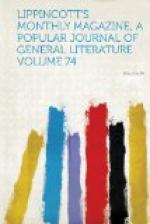Naturally, this necessity was apparent from the beginning. Congress was addressed betimes, and the consequence was a sufficiently sonorous act of date March 3, 1871, assuming in the title to “provide for celebrating the one hundredth anniversary of American independence.” It made, however, no provision at all for that purpose financially. On the contrary, it provided very stringently that the Federal treasury should not be a cent the worse for anything contained in the bill. It furnished, however, the stamp wanted. It “created” the United States Centennial Commission, and it directed the President, as soon as the private corporators should have perfected their work, to address foreign nations, through their diplomatic representatives and our own, in its behalf. A commissioner and alternate were appointed by the President, on the nomination of the respective governors, from each State and Territory, who should have “exclusive control” of the exhibition.
Subsequently, an act of June 1, 1872, established a Centennial Board of Finance, as a body corporate, to manage the fisc of the exhibition, provide ways and means for the construction of the buildings according to the plans adopted by the commission, and after the close of the exhibition to convert its property into cash and divide the same, after paying debts, pro rata among the stockholders. This was to be done under the supervision of the commission, which was to wind up the board, audit its accounts, and make report to the President of the financial outcome of the affair. An inroad on the terms of this act is made by the law of last winter, which makes preferred stock of the million and a half then subscribed by the Federal government—a provision, however, the literal enforcement of which, by the covering back of so much money into the treasury of the United States, is, in our opinion, not probable. It will doubtless be made a permanent appropriation, in some form, for the promotion of the arts of industry and taste.
Ten millions of dollars was the authorized capital of the new board. Events have proved the amplitude of this estimate.
As early as the third day of July, 1873, the President was enabled, by the notification of the governor of Pennsylvania, to make formal proclamation that provision had been made for the completion of the exposition structures by the time contemplated. Nearly three years was thus allotted for preparation to home and foreign exhibitors. A year later (June 5, 1874) an act of a single sentence requested the President “to extend, in the name of the United States, a respectful and cordial invitation to the governments of other nations to be represented and take part in” the exposition; “Provided, however, that the United States shall not be liable, directly or indirectly, for any expenses attending such exposition, or by reason of the same.” The abundant caution of this italically emphatic reservation will scarcely preclude the extension to the representatives of foreign governments of such measure of hospitality, on occasion, as they may have in the like case offered our own.




